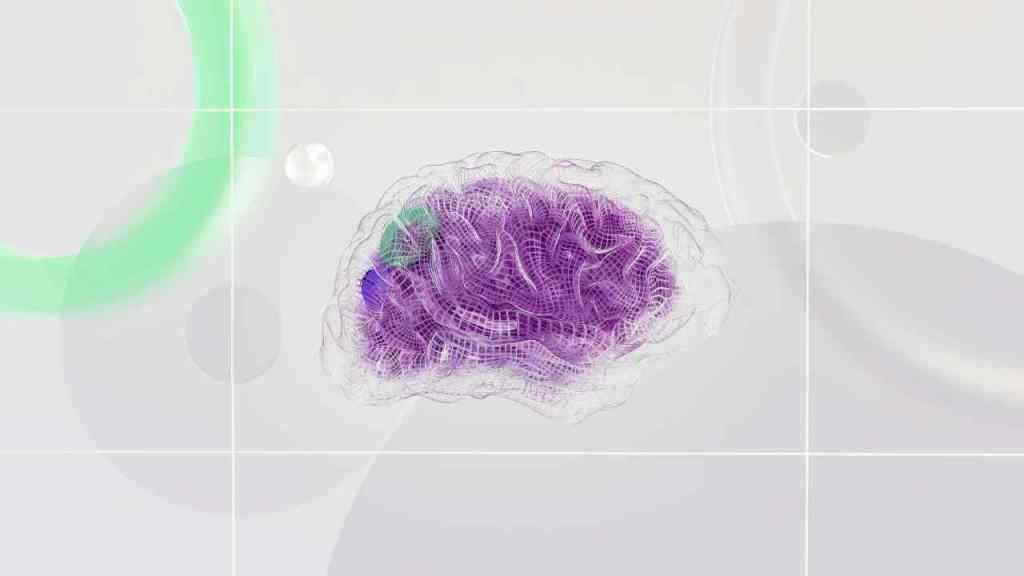AI Peels Back the Curtain of the Mind, Reconstructing Images from Monkey Brainwaves
Hold onto your hats, folks, because the future of brain science just got a whole lot more “now.” Straight outta Nijmegen, Netherlands, a team of brainiacs at Radboud University have trained an AI to basically see through the eyes of monkeys. No, seriously, they’re pulling images straight from the electrical symphony happening inside those furry little heads.
Imagine, if you will, being able to visualize someone’s dreams. Or, even wilder, downloading your memories like you’re living in a real-life episode of “Black Mirror.” This research might not be quite there yet (thank goodness?), but it’s a mind-blowing leap in that direction.
Monkey Business: Decoding the Visual Symphony
So, how’d they pull off this feat of neural espionage? Our intrepid researchers hooked up some macaque monkeys (presumably with tiny, adorable EEG caps) and showed them a bunch of images. As the monkeys were soaking in the visual feast, the team recorded their brain activity, capturing the intricate dance of neurons firing.
Now, here comes the cool part. They fed all that brainwave data into a hungry AI and gave it a simple, yet daunting task: recreate what the monkeys saw, using only the neural recordings. Kinda like giving someone a jumbled jigsaw puzzle made of electrical impulses and saying, “Good luck with that!”
Sharper Than a Brain Surgeon’s Scalpel: The Power of Focus
And you know what? The AI didn’t completely crash and burn! In fact, it managed to spit out some pretty darn recognizable images. Sure, they were a tad fuzzy around the edges, like an old Polaroid that’s seen better days, but hey, it’s a start, right?
But these scientific superheroes weren’t satisfied with “pretty good.” They wanted mind-blowing! So, they took their AI back to the lab and gave it a serious upgrade in the form of an “attention mechanism.” Think of it like giving the AI a pair of those cool, magnifying glasses that Sherlock Holmes uses, allowing it to zoom in on the most important parts of the brain activity.
And boy, did that attention mechanism work wonders! It was like swapping those blurry Polaroids for high-definition, 4K awesomeness. With laser-like focus, the AI was able to reconstruct the images the monkeys saw with mind-boggling detail. We’re talking crisp lines, vibrant colors, the whole shebang!

Dr. Umut Güçlü, the head honcho of this research extravaganza, even went so far as to say, “As far as I know, these are the closest, most accurate reconstructions” ever achieved. That’s some high praise from a guy who knows his brainwaves!
A Brave New World of Possibilities (and maybe some ethical dilemmas)
Now, before you go all “Matrix” on me, let’s take a deep breath and talk about what this all means. This isn’t just some cool party trick for neuroscientists; it has the potential to revolutionize how we interact with the world and, dare I say, with each other.
Unlocking the Mind’s Eye for Those Trapped in Silence
Imagine a world where people who are paralyzed or have locked-in syndrome, unable to speak or move, can finally break free from their physical prisons. This technology could be the key to creating revolutionary brain-computer interfaces that allow them to communicate, control prosthetics, and even experience the world around them in ways we can only dream of. Talk about a game-changer!
Peering into the Black Box of Consciousness
For centuries, the human brain has been the ultimate enigma, a labyrinth of neurons and synapses that even the brightest minds struggled to decipher. But with this breakthrough, we’re one step closer to cracking the code of consciousness itself. Understanding how the brain processes and represents visual information could unlock the secrets of perception, memory, and maybe even the very essence of what it means to be human. Deep stuff, man.
Building a Better (Artificial) Brain
Let’s not forget about our AI buddies. This research isn’t just about understanding the human brain; it’s also about pushing the boundaries of artificial intelligence. By mimicking the brain’s ability to focus and prioritize information, we can create more powerful, efficient, and perhaps even conscious AI systems. Who knows, maybe one day, those AI systems will be thanking the monkeys for their involuntary contributions to science.
The Road Ahead: Navigating the Ethical Maze
Of course, with great power comes great responsibility (thanks, Uncle Ben!). As we venture further into the uncharted territory of mind-reading technology, we need to tread carefully. The ethical implications are vast and complex.
Mind Your Privacy: The Ultimate Data Breach?
Imagine a world where your thoughts, memories, and even your dreams are no longer your own. Where corporations or governments could potentially access the most intimate corners of your mind. It sounds like sci-fi dystopia, but it’s a possibility we need to consider seriously. As this technology advances, safeguarding mental privacy will be paramount.
The Bias Conundrum: When AI Inherits Our Prejudices
AI systems are only as good as the data they’re trained on. And guess what? Humans are biased creatures. Our biases, both conscious and unconscious, can seep into the algorithms that shape our world. If we’re not careful, we could end up creating AI that inherits and amplifies our worst tendencies. We need to make sure that the future of brain-computer interfaces is one of inclusivity and fairness, not discrimination and prejudice.
The Future is Now: Buckle Up, It’s Gonna Be Wild
So there you have it, folks. We’re on the cusp of a mind-blowing revolution in neuroscience and artificial intelligence. The ability to reconstruct images from brain activity is just the tip of the iceberg. Where this journey will take us is anyone’s guess, but one thing’s for sure: it’s gonna be one heck of a ride!
